Your Cart is Empty

Menu
-
- Home
- Collections
- Brands
- A4
- AllMade
- American Apparel
- Bayside
- Bella Canvas
- Big Accessories
- Comfort Colors
- Comfortwash by Hanes
- Core 365
- CornerStone
- Devon & Jones
- District
- econscious
- Flexfit
- Fruit of the Loom
- Gildan
- Hanes
- Harriton
- J America
- Jerzees
- LAT
- Mercer+Mettle
- Next Level
- North End
- Port & Company
- Port Authority
- Rabbit Skins
- Sport-Tek
- Team 365
- Threadfast Apparel
- Tie-Dye
- UltraClub
- Yupoong
- WonderWink
- Styles
- Bulkthreads Basics
- Extreme Discounts
- Customer Service
- Custom tees!
-
- Login

Interested in getting started on your own? Here are the basics!
December 19, 2022 3 min read
Thinking of starting a business?
We get it--you're an artist. And as an artist, you've got lots of pent-up, brilliantly creative ideas that are just itching to get out.
Oh, and you're a business-minded soul, too, who wants to make a few extra bucks on the side. We understand you, and want to support you as you make a lot of decisions on your screen-printing journey. That's why we supply all of your bulk apparel for printing in the first place!
Well, we can't necessarily tell you everything you need to know in one article, but we'll try to give it a start. Do reach out if you have questions!
Finding a Machine
First things first, what kind of jobs are you going to take on? If you're like some of our clients who want to run a side hustle out of their basements, or maybe just make a few shirts here and there for the local PTA, consider getting a vinyl press.
These heat press machines are relatively small and pretty cheap, as well as user-friendly.
Here's a review and an explanation.
For simple jobs, automatic heat press machines can work wonders. And if you're looking for an even cheaper option, consider this one from your local big-box store.
At bulkthreads.com, we use commercial machines, like the Sportsman EX.
It's a much larger investment than most DYIers want to make, and it's takes some know-how to operate (and whole lot of space in the old garage), so depending on your needs, you might want to start small with an at-home heat press and go from there.
Materials
Okay, so you've looked into the machines--now you need your materials, things like ink, poly bags, etc. Of course, you always want to use high-quality screen printing ink, ink that's specifically designed for use on fabric, as it will have the right consistency and drying properties. Which means avoiding ink intended for paper, as it may not hold up well on fabric.
Here's a place you might try. As with all things in life, you get what you pay for, so do you due diligence.
For example, do you want to use water-based ink, or plastisol ink? Plastisol cures differently, contains a plastic-base (hence the name), and is easier to clean.
Here's a great video explaining the difference!
Use high-resolution artwork
Okay, so this is a no-brainer. Of course you need high-quality art, but with printing you need to think "vector art." As Adobe reminds us, there are vector images and raster image, and the difference between the two is grid (vector) and pixels (raster). Printing requires vector art simply because svg and ai files, two extensions that use vectors, are built for scalability. Printers need to be able to expand your art without pixelating it--enlarge it without ruining it.
Is there a difference between eps, ai, and svg? Not so far as we're concerned--all of these extensions work well!

Vector

Raster
Source for images
Use a good-quality screen
The screen is an essential part of the screen printing process, as it holds the ink and transfers it to the fabric. As with anything in life, good materials make for good products, so make sure to use a screen that is in good condition and has a fine mesh count (usually around 110-160 threads per inch).
Here's some general info about the screen printing process, from our good friends at the Met.
And here's a good place to buy screens!
One word about mesh counts: the higher the mesh count, the finer the print. For example, a mesh count of more than 300 may be used for super fine images, super thin inks, etc. More often than not, your typical screen will use a mesh count of around 120ish.
Follow proper screen printing techniques
Make sure to follow proper screen printing techniques, including using the right amount of pressure and allowing the ink to dry completely before removing the screen.
Check out this video for a nice DIY overview!
Test your design before printing on a t-shirt
If possible, try printing your design on a piece of paper or fabric scrap before printing it on a t-shirt. This will give you a chance to see how the ink looks and make any necessary adjustments before committing to printing on a t-shirt. Hey, the more you headaches you avoid, the better, right?
Happy printing!
Leave a comment
Comments will be approved before showing up.
Subscribe
Sign up to get the latest on sales, new releases and more …
